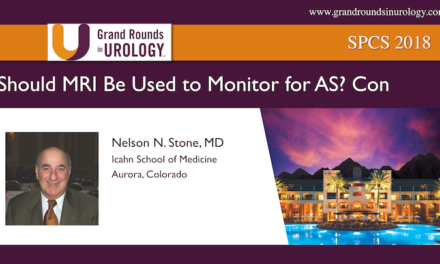Richard G. Barr, MD, PhD, FACR, FSRU, presented “How the Addition of Multiparametric MRI has Changed a Private Practice Setting in Prostate Screening” during the 6th Global Summit on Precision Diagnosis and Treatment of Prostate Cancer on September 22, 2022.
How to cite: Barr, Richard G. “How the Addition of Multiparametric MRI has Changed a Private Practice Setting in Prostate Screening” September 22, 2022. Accessed Jul 2025. https://grandroundsinurology.com/how-the-addition-of-multiparametric-mri-has-changed-a-private-practice-setting-in-prostate-screening/
How the Addition of Multiparametric MRI has Changed a Private Practice Setting in Prostate Screening – Summary
In this presentation, sponsored by Canon, Richard G. Barr, MD, PhD, FACR, FSRU, Professor of Radiology at Northeast Ohio Medical University and practicing radiologist at Southwoods Imaging in Boardman, OH, describes how the addition of multiparametric MRI (mpMRI) has changed prostate cancer screening for a small private radiology practice group. He explains the imaging center setting, patient criteria, screening protocol, and the impact of advanced technology on patient management. Dr. Barr notes that the imaging center has seen exponential growth in the number of mpMRI prostate screening cases since 2016. He then shares patient examples where mpMRI was able to detect lesions that might have gone unexamined after a previous negative biopsy. Beyond catching previously overlooked lesions, mpMRI can be used to guide biopsies, manage active surveillance, and help with local staging. Additionally, urologists have reported a 30% decrease in patients scheduled for prostate biopsy after imaging, indicating that better imaging can reduce unnecessary procedures. Dr. Barr concludes with a look at future improvements to MRI, including AI advances that enable noise reduction and shorten scan time.
The Global Summit on Precision Diagnosis and Treatment of Prostate Cancer is a unique multi-disciplinary forum organized to inform the key health care stakeholders about the emerging advances in clinical case and research and create a consensus-based vision for the future of precision care and educational and research strategy for its realization. The mission of the Summit is to fill the currently existing gap between the key experts of in vivo imaging, the world authorities in the in vitro fluid- and tissue-based molecular diagnostics, including genomics, and thought leaders in the development of novel observation strategies (e.g., active surveillance, or AS) and therapeutic interventions.
ABOUT THE AUTHOR
Dr. Richard G. Barr is a radiology professor at Northeast Ohio Medical University in Rootstown, OH and a practicing radiologist at Southwoods Imaging in Boardman, OH. In 2018, Dr. Barr was named Editor-in-Chief for the Journal of Ultrasound in Medicine by the American Institute of Ultrasound Medicine.
Dr. Barr received his PhD from Michigan State University and his medical degree from Case Western Reserve University. He completed a fellowship in cross-sectional imaging rom Unviersity of California, San Francisco and his residency in diagnostic radiology at the Cleveland Clinic. Dr. Barr specializes in breast imaging, liver stiffness evaluation, and prostate mpMRI.




